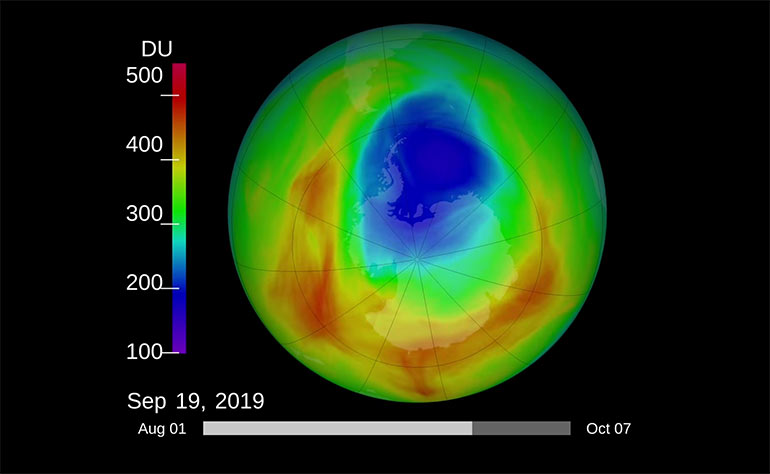Warm temperatures shrink ozone hole
26th October 2019
USA: September and October has seen the smallest ozone hole since 1982, due to warmer stratospheric temperatures.
The annual ozone hole is said to have reached its peak extent of 6.3 million m² (16.4 million km²) on September 8 and then shrank to less than 3.9 million m² (10 million km²) during the remainder of September and October.
According to scientists from NASA and the National Oceanic and Atmospheric Administration, this is the third time in 40 years that weather systems have caused warm temperatures that limit ozone depletion. Similar weather patterns in the Antarctic stratosphere in September 1988 and 2002 also produced atypically small ozone holes.
“It’s important to recognize that what we’re seeing this year is due to warmer stratospheric temperatures,” said Paul Newman, chief scientist for Earth Sciences at NASA’s Goddard Space Flight Centre. “It’s not a sign that atmospheric ozone is suddenly on a fast track to recovery.”
As of October 16, the ozone hole above Antarctica was still small but stable, and is expected to gradually close over the next six weeks. Scientists expect the ozone hole to shrink back to the size it was in 1980 by approximately 2070, as ozone-depleting chemicals banned by the Montreal Protocol but still in the atmosphere continue to decline.







